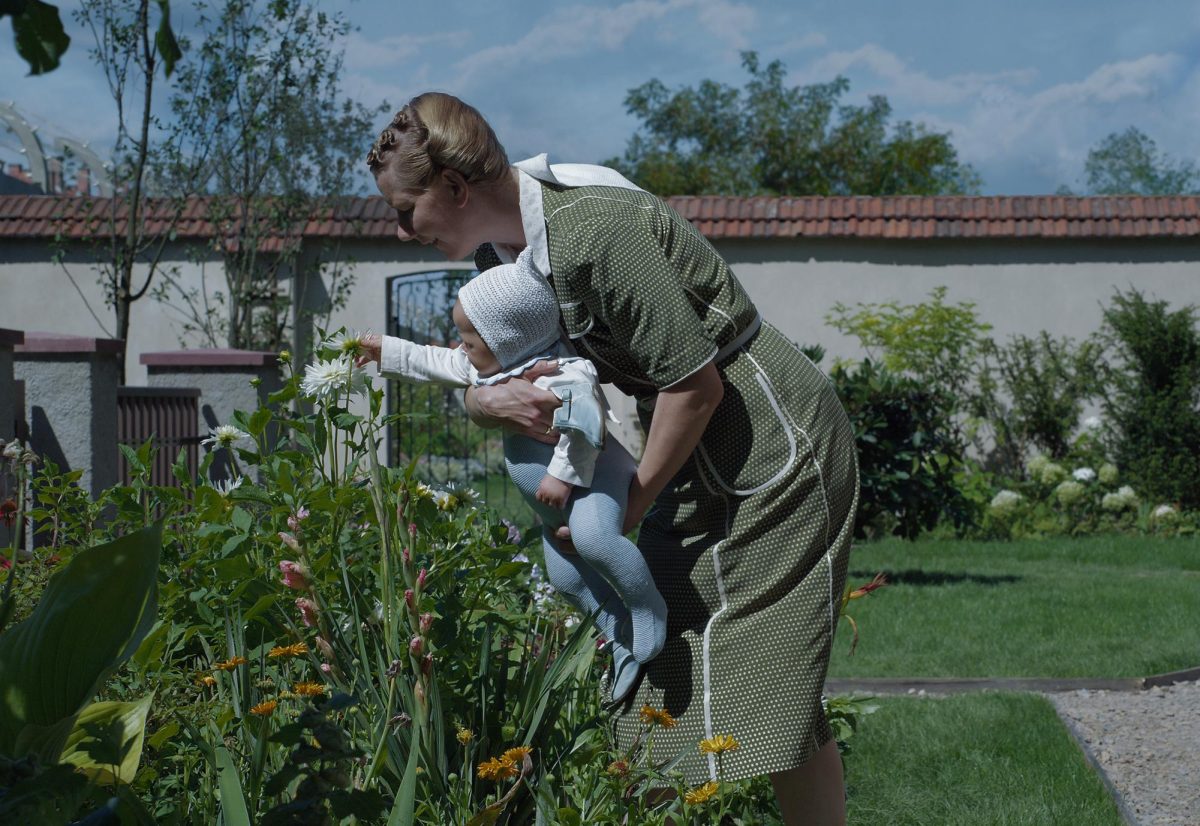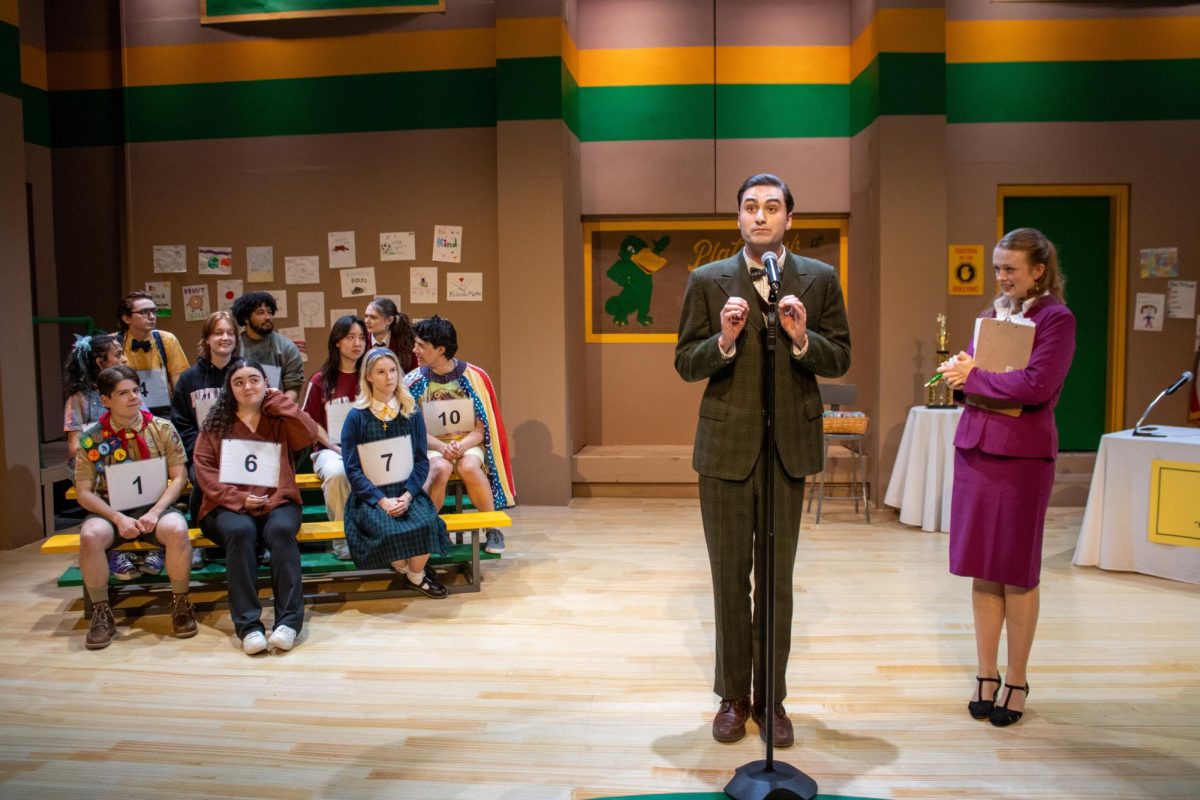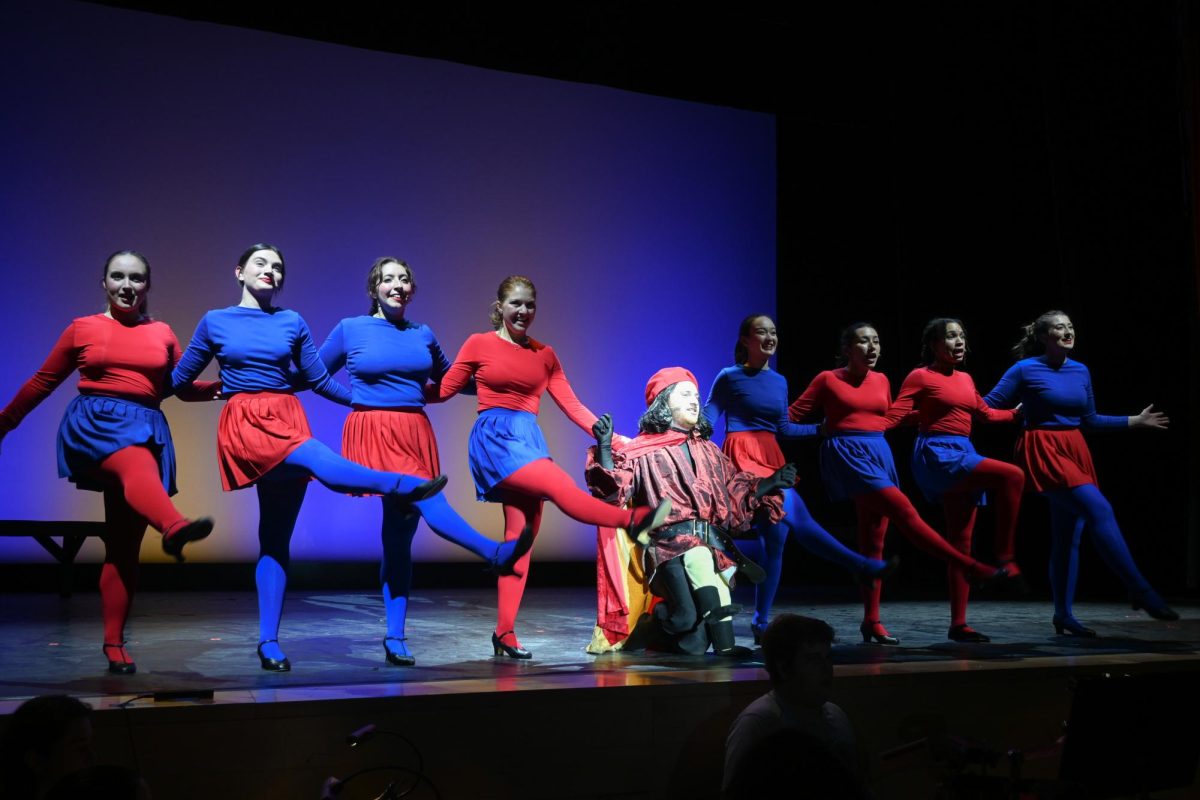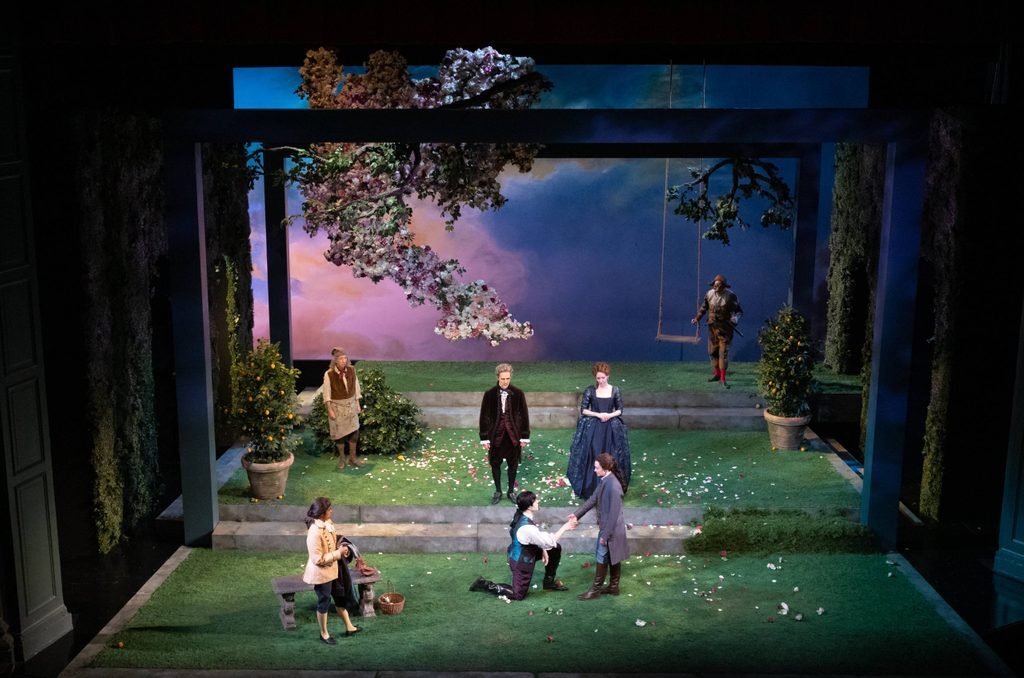For the past decade, film director and screenwriter Jonathan Glazer has refined his newest film, “The Zone of Interest,” to be “a warning,” not a history lesson.
Following Glazer’s critically acclaimed feature “Under the Skin,” “The Zone of Interest” takes place in the middle of the Holocaust, following the infamous Rudolf Höss (Christian Friedel), the longest-serving Nazi commandant of the Auschwitz concentration camp, and his family — most notably his wife, Hedwig (Sandra Hüller).
Holocaust cinema often swims in its bigness. Films such as “Schindler’s List” and “Life is Beautiful” understand the magnitude of the subject matter and embrace it with shimmering scores, haunting imagery and grandiose climaxes. Quite often, these heartfelt films have themes of family strife, complicity in genocide and national loyalty.
“The Zone of Interest” discards the grandeur of those themes and bottles what sound designer Johnnie Burn calls “two different films” into a chilling amalgamation of what the Holocaust looked and sounded like. One experience is the visual world — the Höss home and the life Rudolf strives to build for his family — and the other is the audial soundscape. Throughout the movie, as Rudolf struggles with a looming promotion that will result in the upheaval of his family, the guttural and stomach-churning noises of the Holocaust surround the timid home and penetrate every scene.
The Höss family’s peaceful existence next to Auschwitz forces the audience to bear witness to the banality of evil. The architects of The Final Solution and concentration camps may not have been as over-the-top as depicted in other Holocaust media. They were not always screaming, shooting, killing and presenting all of their evil ways on the shiniest of silver platters for everyone to see and hear.
Oftentimes, the despotic nature of the Nazis manifested in silence. Höss mulls over human incinerators as if he were selecting a new oven for his house. Hedwig picks out clothes from Jewish inmates of the camp and poses in an opulent fur coat in front of her mirror before trying on makeup, all while emotionlessly taking in the sounds of prisoners being shot and beaten outside of her window.
As she shows her infant their garden, she grows emotional at the prospect of uprooting her family and reminisces with her husband about a lovely couple they met at a spa in Italy. Hedwig’s character is unsettlingly charming and, at times, relatable. Her subsequent outbursts at her husband and their Polish servants are turbulent microcosms of the inner hatred Nazis harbored.
Hüller’s two-faced performance personifies the German image of the Nazis in the early 1940s — and that’s where Glazer’s subtle historical storytelling shines. While much of the German population knew what was happening, some were not aware of the full scope of the exterminations within concentration camp walls. When Hedwig’s mother comes to visit, Auschwitz infects her with its poison. She coughs from the smokestacks, is awoken from the explosions and ultimately flees in the night in response to the horrors.
Beyond the banality of evil, “The Zone of Interest” offers a window into another terrifying concept: What if we are more like these people than we think? Glazer posits that the film is more about the present day than the past. Throughout the runtime of “The Zone of Interest,” it may seem difficult to distill that message through the yelps from drowning prisoners and the remorseless barking of guard dogs; however, tuning out the background noise and honing in on the mundanity of the Höss family’s routines and their ambitions clears the smoke around that theme.
That imposed introspection grows painfully long as the voyeurism forced by faraway camera angles sets in. Stylistically, “The Zone of Interest” is ripe with a visual defiance to violence and a removed omnipresence. Wide-angle shots of the Höss’ movements feel akin to that of a multi-monitored security room — always watching, yet consistently too far away to soak in the evil.
For all of the directorial prowess Glazer flexes in this 106-minute soiree that focuses on the most gut-wrenching era of history, the narrative occasionally feels a bit too slow to match its thematic and technical splendor. While drawn-out shots of the Höss family walking past Auschwitz’s smoke-belching chimneys and conversations peppered with not-so-faraway gunshots are initially wince-inducing, the drab nature of their life can feel a little too one-note.
Still, the boldness of the sound design and a hair-raising score from Glazer’s longtime collaborator Mica Levi embodies the unfathomable wickedness that permeated throughout World War II-era Germany. These, coupled with a plot centered around family values that are so disturbingly relatable, force the viewers to ask themselves, “Are we really that different from these monsters?”
As the distance between the Holocaust and the present day grows, it becomes increasingly important to explore new methods of scrutinizing the horrid conditions and personalities of that time — and to further extrapolate and contextualize them across the modern world to ensure such atrocities are understood and never repeated.
Glazer intended for “The Zone of Interest” to examine the complacency of such families like the Höss’ within “the present tense.” At the end of the film, jolting transitions between the past and present metaphorically send the audience away from this world. After a black screen and siren-like wails blasting through the speakers finally give way to the closing credits, the harrowingly hollow world of Glazer’s “The Zone of Interest” is left to both compartmentalize the Holocaust as it was and exist among the many ongoing genocides in the world today.
Editor’s Note: This story was edited Feb. 2 to correct the spelling of the film’s sound designer, Johnnie Burn.















